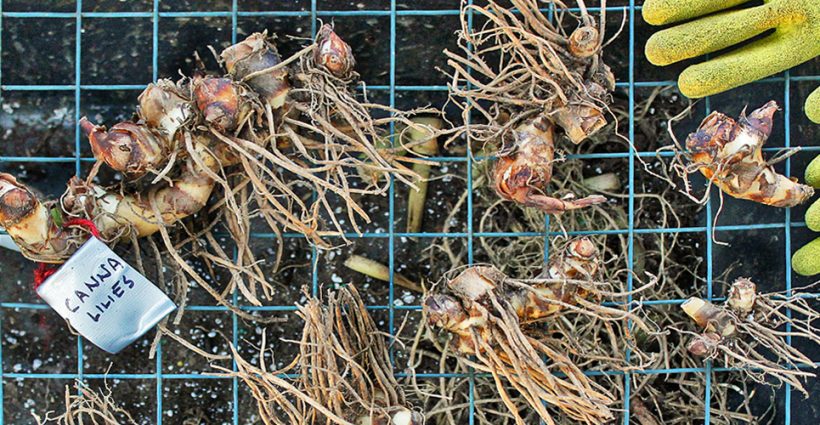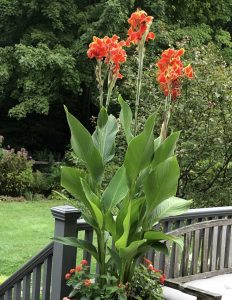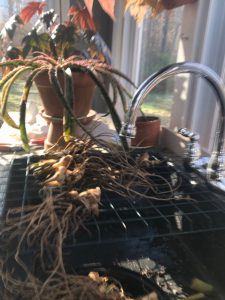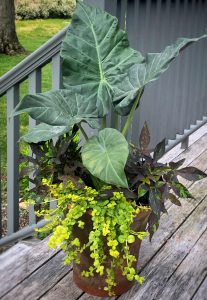designed for the way women work.

Overwintering Tropical Plants Such As Canna Lilies, Colocasia and Alocasia
Category: 'Dear Ruth' Column, Flower Gardens, How-To Projects, Plant Ideas & Info, Presenting "The Curious Gardener", Tools & Techniques

This year I purchased three popular tropical plants for outdoor containers: canna lilies, Colocasia and Alocasia (aka Elephant ears). I was happy with all three, though the canna lily was the star performer for me.
I love plants that come back each year, even if it means digging them up in the fall and storing them away for the winter. These plants can be left in the ground if you live in Zones 8 to 11, but I live in Zone 6 where they will not survive a winter outdoors.
For me, the ritual of preparing the plants for overwintering and then bringing them out the following spring is part of the magic and fun of gardening. I overwinter my dahlia tubers too.
Here is what I did this fall with my tropical plants– learning from my go to horticulturist Ruth Clausen and from my own experience with dahlias.
Wait until you’ve had a couple of frosts before you bring them indoors. The leaves will die back but the root system underground will be fine until the ground freezes.
To be correct, all of these plants are geophytes, with an underground storage system that is either a true bulb, a rhizome, a tuber or a corm. For more information on the difference between these geophytes, click here.
For the purposes of this step by step instruction, I will use the terms bulb or roots.
Step 1:
Cut the stems of the plant down to about 2- 5 inches above the soil level so you can see what you’re doing in the next steps. The stem also serves as a handle.
Step 2:
Before the ground freezes gently lift the plant out of the soil. Give a wide berth around the roots to avoid piercing the bulb with a sharp spade or fork. Take your time and shake off as much garden soil as you can without damaging the bulb.
Step 3:
Wash the bulbs with a hose or under a faucet– or soak for a couple of hours in a large bucket filled with water. The more soil you remove the less chance of root decay during the winter.
Step 4:
Let the bulbs dry completely in a warm place undercover or in the sun. Some people leave them, especially cannas, to dry slowly for a week. I put mine on a screen with air circulating above and below and left them in a warm spot for two days.
Step 5:
You can cut off the ends of the little rootlets, because they won’t serve any purpose next spring when you plant up your bulbs. Or you can leave them to shrivel as they dry.
Step 6:
Cut the stems again, this time closer to the bulbs. The less you have that’s green the less chance for rotting while in storage.
Step 7:
Label, then lay them carefully in a box with either peat moss, sawdust or shredded newspaper. (I use shredded newspaper.) Separate them so they are not touching each other. Keep layering more paper between and on top and then close the box for the winter. Some people recommend checking on them for any rot or insect damage from time to time. Ruth suggests you avoid plastic bins that are sealed shut because you don’t want to prevent the bulbs from breathing. I use a cardboard box.
Step 8:

Put the box in a cool, dry place that doesn’t freeze. Ideally it should be above 40 degrees F.



I never had much luck in wintering over but then I didn’t know to rinse the bulbs and then set to dry. So will dig mine this morning and follow your procedure and hope I have good luck. I have had one or two winter over in the past when they should not have as I just left them because it never worked how I was doing it. Thank you
Peace and blessings,